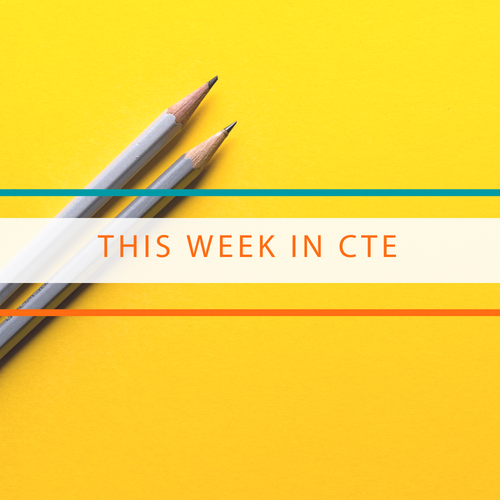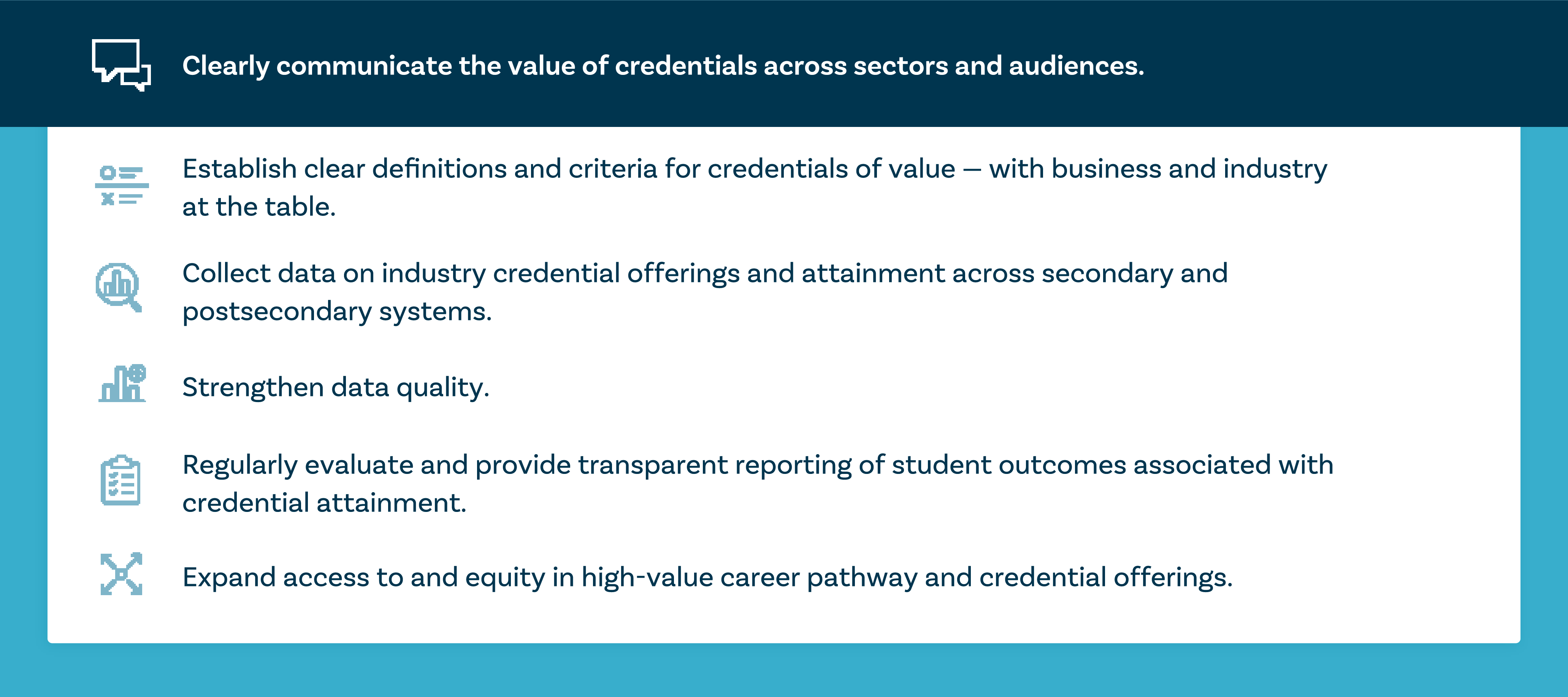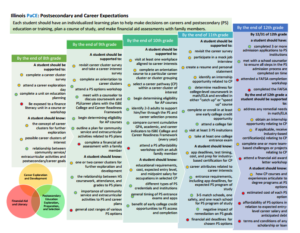 Developed with input from nearly 200 national, state and local education and workforce development leaders and supported by 40 national organizations, Without Limits: A Shared Vision for the Future of Career Technical Education lays out five inter-connected and equally critical principles.
Developed with input from nearly 200 national, state and local education and workforce development leaders and supported by 40 national organizations, Without Limits: A Shared Vision for the Future of Career Technical Education lays out five inter-connected and equally critical principles.
Only through shared commitment and shared ownership among leaders and practitioners at all levels can we realize the possibility and aspiration of a new career preparation ecosystem that provides each learner with limitless opportunity. The This Week in CTE blog series will highlight state and local examples where CTE Without Limits has been made actionable. If you would like to share how your Career Technical Education (CTE) program creates limitless opportunities for each learner in this blog series, please email Brittany Cannady, bcannady@careertech.org.
This Week in CTE: May 17-21, 2021
Each learner engages in a cohesive, flexible and responsive career preparation ecosystem
“Tennessee is investing $30 million to encourage school districts to reimagine the possible and create innovative, high-impact high school experiences for all students by developing strategic partnerships with business and industry in their local community,” said Education Commissioner Penny Schwinn.
21 school districts in Tennessee will receive grants for the new Innovative High School Models program. The goal of this new program is to intentionally connect Tennessee public school districts, postsecondary institutions and local employers to work together and create a career preparation ecosystem for each learner.
This grant program is funded with federal Elementary and Secondary School Emergency Relief Fund (ESSER) stimulus funding.
Each learner feels welcome in, is supported by and has the means to succeed in the career preparation ecosystem
Congratulations to the Partnership to Advance Youth Apprenticeship (PAYA) 2021 grant recipients! Advance CTE is proud to be a PAYA National Partner and excited to watch the grantees launch opportunities that build more inclusive local and regional economies.
Youth apprenticeships will be an extremely important strategy in ensuring each learner has the skills and supports needed to succeed in the career preparation ecosystem and the career of their choice. Not only do they provide opportunities for young people to access affordable postsecondary credentials, they also allow employers to tap into a rising generation of talent. The 17 PAYA grantees will expand their programs over the next 18 months as they develop ambitious strategies, accelerate implementation and connect with partners to expand and strengthen the field of youth apprenticeship.
Advance CTE recently published the first blog in a series in partnership with New America through the PAYA network. The blog series will highlight how the PAYA sites are using data to improve youth apprenticeship quality and equity.
Each learner skillfully navigates their own career journey
Culper Technical Education Center (CTEC) in Virginia has an intentional focus on preparing each learner for their future careers through hands-on instruction and authentic workplace experiences. Learners enrolled as a CTEC student commute from their home school to participate in CTE programs, on-site, for half of their school day.
This week, we congratulate learners who have made the decision to begin the next step in their career journey at CTEC!
Our @culpeperschools #CTE Signing Day begins at 10am. We are so excited to celebrate our #Enlisted and #Employed!#CareerReady #LifeReady #CTEWorks pic.twitter.com/1nkNRLZaOL
— CTE4CCPS (@CTE4CCPS) May 20, 2021
Each learner’s skills are counted, valued, and portable
Last week, the U.S. Department of Education announced the 57th class of U.S. Presidential scholars. This week we continue to celebrate the accomplishments of those receiving this honor, particularly the 20 U.S. Presidential Scholar in Career Technical Education.
This year, Raymond A. Slifer of Quakertown Senior High School became Pennsylvania’s first-ever CTE student to receive the award.
“I am proud of Raymond for becoming Pennsylvania’s first U.S. Presidential Scholar in Career and Technical Education since the inclusion of CTE in the Presidential Scholars program in 2015,” said PDE’s Director of the Bureau of Career and Technical Education Lee Burket.
“Raymond demonstrated his academic accomplishments, ingenuity, and problem-solving, and is being recognized at the national level. I congratulate him for being an outstanding student who demonstrates excellence in CTE.”
Each learner can access CTE without borders
Four mentoring programs based in California, Iowa, Massachusetts and Minnesota have been an asset for learners amidst barriers presented by the pandemic. Regardless of social distancing guidelines and mandates, virtual mentoring opportunities still provided learners with access to networking, financial literacy, training for workplace skills and more.
This article published by The 74 shares more about how youth across borders, particularly those from historically marginalized communities, were able to connect to adult mentors during the pandemic through the networks provided by these programs.
Brittany Cannady, Senior Associate Digital Media



 Afterschool programs like SHINE give elementary and middle school students the opportunity to explore and prepare for different careers by delivering developmentally appropriate curriculum. They are effective in building student’s academic and technical skills as well as social and emotional development, including employability skills like teamwork, communication and critical thinking. In fact,
Afterschool programs like SHINE give elementary and middle school students the opportunity to explore and prepare for different careers by delivering developmentally appropriate curriculum. They are effective in building student’s academic and technical skills as well as social and emotional development, including employability skills like teamwork, communication and critical thinking. In fact, 

